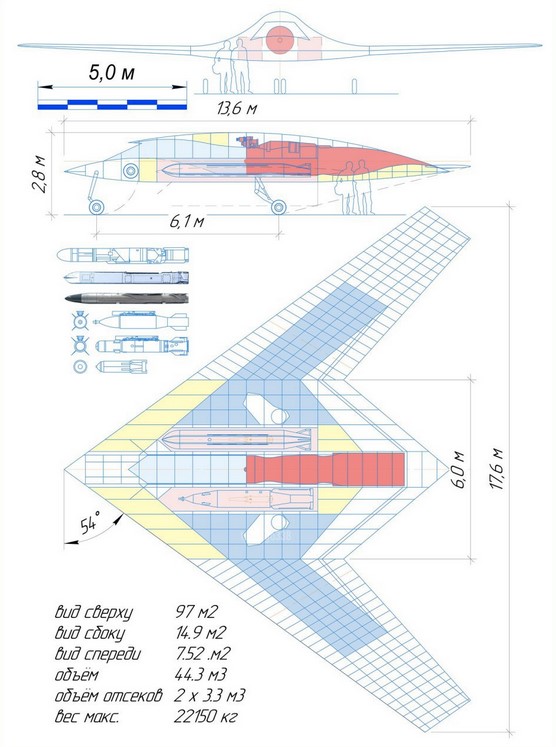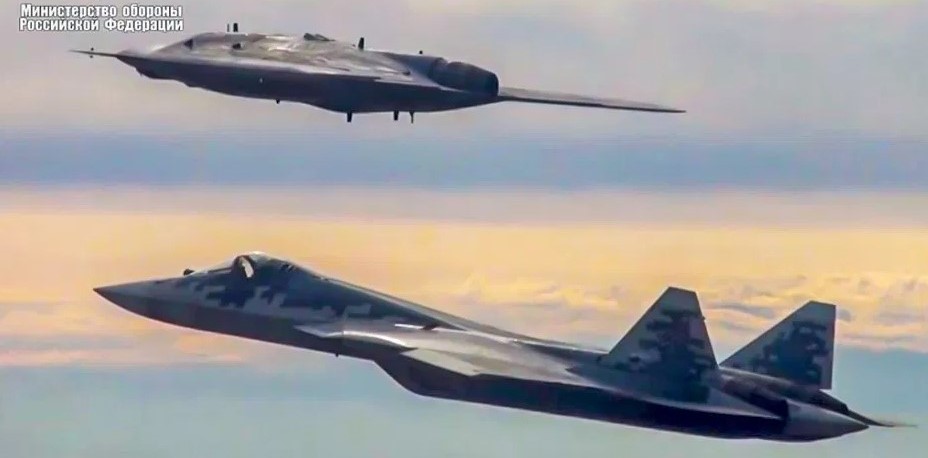While Europeans are arguing over the SCAF program, Russia is seeking to widen the gap with its stealth fighter UAV program.
New prototypes
The Russian Ministry of Defense has reportedly ordered three new prototypes of the UCAV S-70 Okhotnik, which will serve as a wing drone for the fifth-generation fighter, the SU-57, but can also be operated from the ground. The NAPO plant in Novosibirsk would be in charge of their production. Trials could begin in 2022 and continue until 2023.
Specifics
The second prototype would incorporate modifications to its design to make it even more stealthy, to its flight controls, and to the sensors associated with its AI (reconnaissance, designation, communication) to enable it to evolve, escape missile launches, and strike its targets autonomously. These changes are based on the lessons learned from tests of the first prototype, which began in the summer of 2019. After validation of these modifications, the third and fourth prototypes would have a configuration similar to that of the production models and would be designed to test weapon systems and man/machine collaborative combat systems (MUM/T). However, the first prototype would continue testing. Last December, the RIA Novosti agency quoting a military source had evoked bombing tests on the test range of Ashuluk near the Caspian Sea, using a 500 kg FAB-500 M-62 bomb. Bombings on targets whose coordinates would be known in advance. Since last summer, the Ashuluk site has been deploying several anti-UAV systems designed to simulate highly contested airspace (S-400, Pantsir S1, offensive jamming ...).
Acceleration
Last summer, the OAK consortium saw its delivery schedule advanced by 12 months by the Kremlin to accelerate the aircraft's production and deployment from 2024. The 20-ton UAV designed by Sukhoi from 2011, with a wingspan equivalent to that of a Mig-29, has been specified to carry six metric tons of weapons in two separate bunkers more than 4,000 kilometers away. These armaments would be common to those of the Su-57, including the famous miniaturized version of the hypersonic missile KH-47M2 Khinjal. In accordance with the speech by Defense Minister S. Shoigu on January 29, the Okhotnik will participate in the accelerated modernization of the Russian air fleet to enable it to penetrate NATO's air defenses. The S-70s could thus integrate 2 to 3 squadrons of Su-57s to extend their radar detection range. But the role of the S-70 could also evolve towards that of an interceptor in order to neutralize not only opposing combat aircraft but also reconnaissance platforms, AEW aircraft, or tankers, thus justifying the integration of short- and medium-range missiles (R73/74, R77). In sum, the Russian UCAV could increase the strike capabilities of the Russian air force tenfold, before the final deployment of the 76 Su-57s expected in 2027.


Découvrez cet article sur Air&Cosmos

